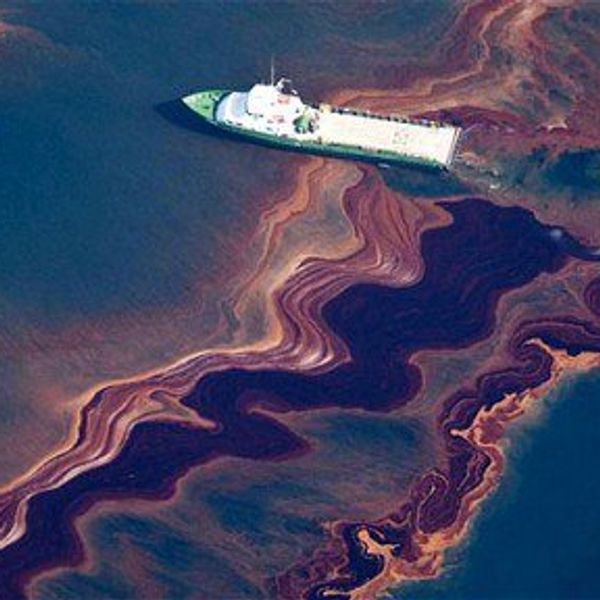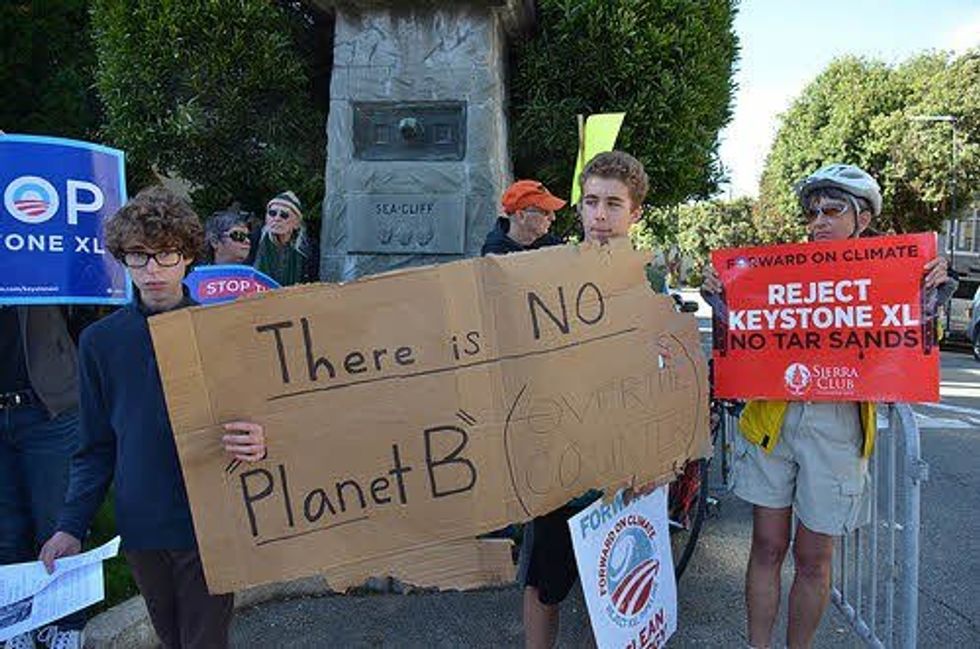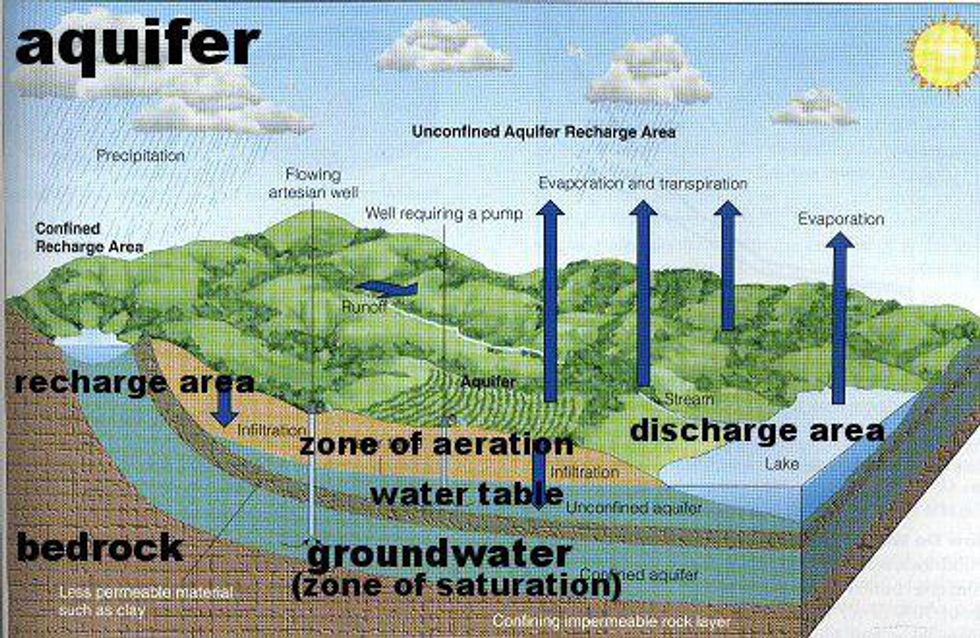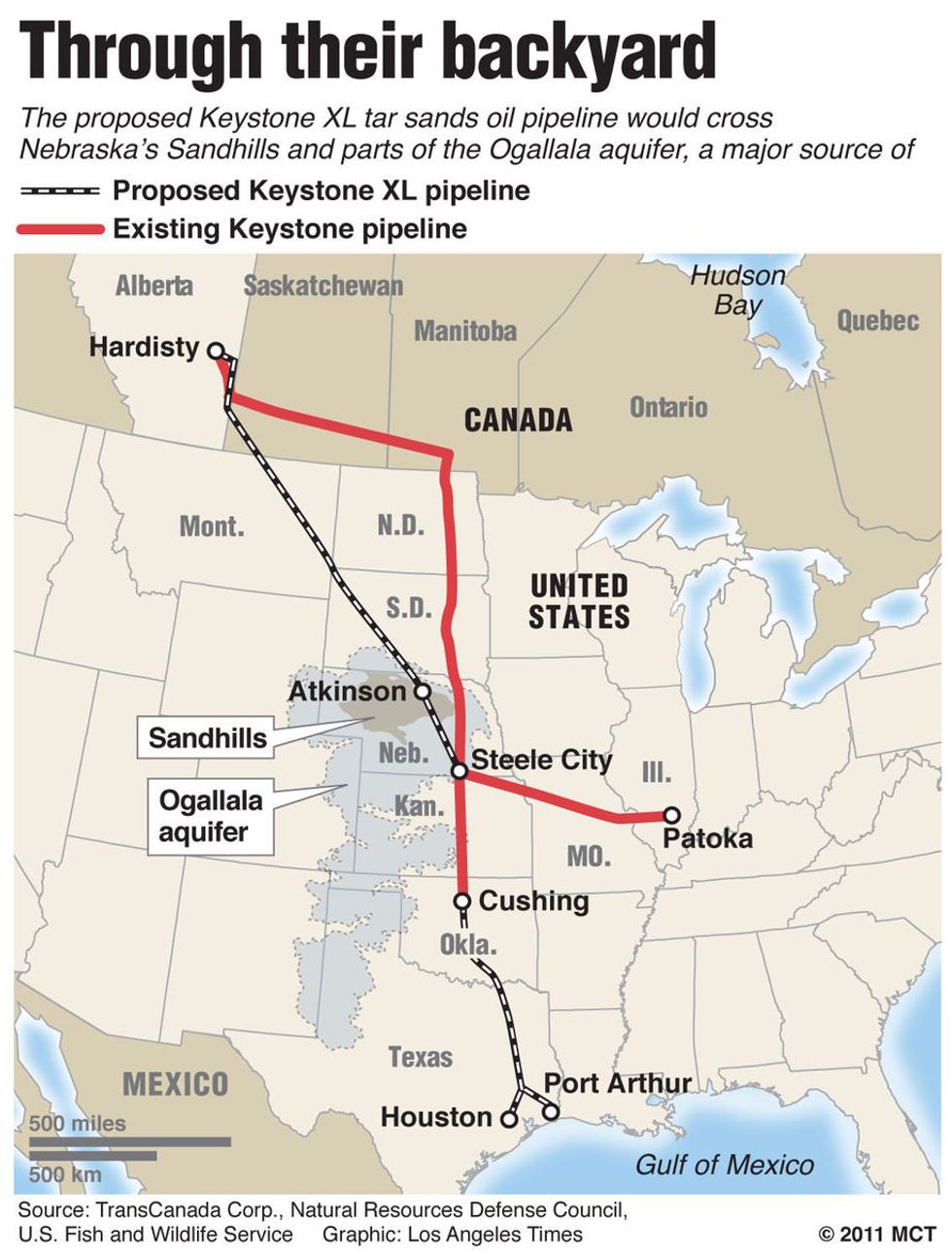Since April of 2014, the Keystone XL oil pipeline bill has been heavily debated in Senate, and in March of 2015, the Senate failed to override President Obama's veto of the bill. Although this occurred in March, it is still important to know about this bill for the upcoming presidential election.
I am not an expert, nor am I an environmental scientist, but I like to be an informed person, and since this Keystone oil pipeline is so controversial, I think you need to know about it.
In my AP Environmental Science class in high school, my teacher was the first one to tell my class about this oil pipeline proposal. At the time, we were learning about aquifers and water usage. An aquifer is basically where we humans get our drinking water, but the dictionary would say:
An aquifer is an underground layer of water-bearing permeable rock, rock fractures or unconsolidated materials (gravel, sand, or silt) from which groundwater can be extracted using a water well.
The Ogallala Aquifer provides water to millions of people and plants throughout the central region of the United States, and it holds enough water to cover the country’s 48 contiguous states two feet deep. As for the Keystone pipeline, TransCanda, head of this project, proposed this oil pipeline that would transport bitumen and liquefied natural gas drawn from the tar sands to refineries on the Gulf Coast, mainly in Texas. So, it would be a sort of transcontinental oil pipeline from Canada to Texas.
TransCanada originally wanted the pipeline to be buried four feet underground, possibly buried in water. It would transport bitumen and liquefied natural gas drawn from the tar sands to refineries on the Gulf Coast, mainly in Texas. So, it would be a sort of transcontinental oil pipeline from Canada to Texas.
The issue is if some of the oil were to spill or leak into the water of the aquifer, then the water would be contaminated. A majority of experts believe the contamination of this water is a serious issue and that construction of the pipeline in this manner should never occur, but one expert in particular believes the contrary. Dr. Goecke thinks TransCanada has taken some precautions since their original route proposed, and if there is a leak into the aquifer, the aquifer will act like a sponge, and not all of the water will be contaminated. After many back and forth arguing between the two, both still believe there are some risks in construction of this pipeline near the Ogallala aquifer.
As someone who continuously tries to advocate for sustainability, I would be appalled if this pipeline ever were constructed. I mean, the fact that the oil could leak into the source of water for millions of people and ecosystems scares me because water is (surprise) not a resource that we will have forever. In other words, if this aquifer does become contaminated, where will we receive our water? And it seems so petty to lose a resource people, animals, plants, and ecosystems need for life over oil, a resource we do not need to literally survive.
I hope this article explained this whole controversy in simpler terms, but I do encourage you to keep up with the Keystone pipeline in the news because it will be an issue in the upcoming election as well as the rest of our lives.























